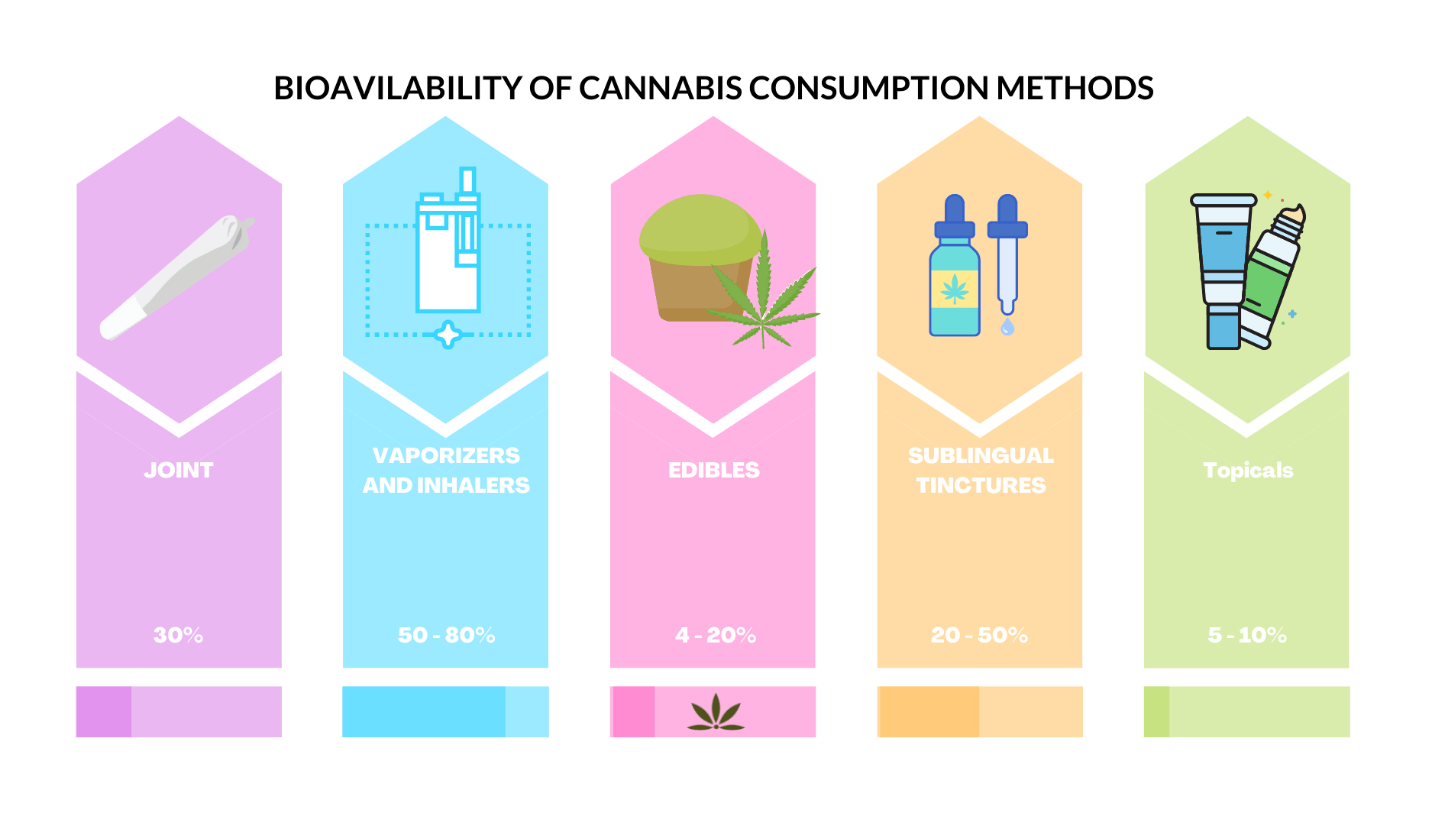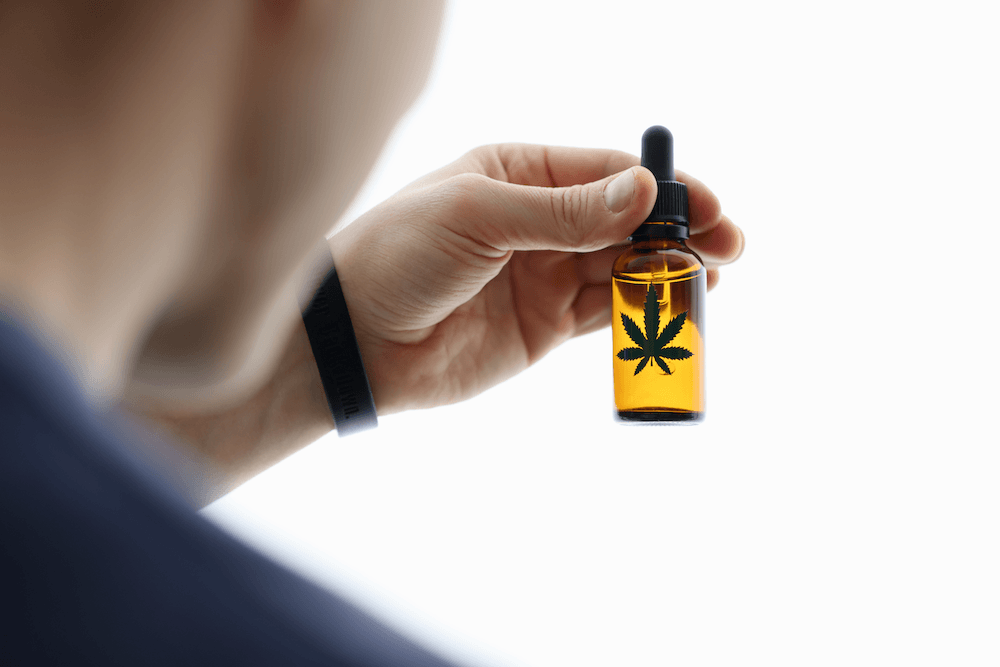Bioavailability of Cannabis Consumption Methods: What You Should Know

One of the best things about exploring cannabis medicine when you get your medical cannabis certification is that there really is something for everyone. While it’s commonly known that many people choose to smoke their cannabis through joints, pipes, bongs, or vaporize their cannabis product through vaporizers or dabbing, cannabis doesn’t need to be inhaled for the medical cannabis patient to experience its benefits. Edibles are an important part of the medical cannabis patient’s toolkit, recognizing that not everyone wants to take cannabis in through their lungs.
Modern medical cannabis dispensaries now offer a wide variety of consumption methods outside inhalation options, with different sub-categories within each method. For instance, cannabis edibles can be purchased in chocolates, gummies, teas, beverages, hard candies, gums and mints, capsules, and almost any confectionary you can name that can be infused. Sublingual products include oils, and oral strips that distribute cannabinoids through the mucous membranes under the tongue.
When shopping for medical cannabis products that are ingested rather than inhaled, medical cannabis patients will generally read a label, understand THC/CBD levels, and whether the product has a high concentration of terpenes. However, what they won’t consider is that different types of cannabis products will affect the body differently due to absorption rate, also known as bioavailability, as well as a whole other host of biological factors that affect how cannabis makes one feel.
At Compassionate Clinics of America, we want to ensure that those who receive their medical cannabis certification with us are equipped with the knowledge on how cannabis affects our minds and bodies. Here we’ll discuss how cannabis is absorbed into the bloodstream and body, and how that may affect the medical cannabis experience.
What is Bioavailability?
Bioavailability is a term to describe how much and at what rate something gets absorbed into one’s bloodstream. In the case of medical cannabis, patients and practitioners are concerned with the bioavailability of cannabinoids and terpenes as well as other parts of the plant. While many medical cannabis brands are working towards creating products that are more bioavailable, there are many internal factors in the patient that will affect bioavailability, including body mass and age.
Other aspects that impact bioavailability include method of administration, dose, and how the product is formulated, which includes the combination of cannabinoids and terpenes as well as the materials used as carriers of the medicinal properties for absorption.

Many products a medical cannabis patient may find in a dispensary include those that use medium-chain triglycerides, also known as MCT oil, for their product formulations, a fat carrier that aids in the digestion of the product. Many companies will claim that their pure MCT oil is the key to bioavailability, yet is believed the body absorbs an average of only 20% of a dose when ingesting cannabinoids and terpenes with MCT oil.
In addition, the onset of oral products and oils are relatively slow, leading cannabis companies to innovate to push the envelope on making products more bioavailable.
How Can Bioavailability Be Increased?
One way that companies are increasing bioavailability of edible products is through water-emulsification technology, which breaks down cannabinoids into tiny droplets, making them more soluble in water, or so that it can dissolve or completely disperse into a water-based liquid. Another way bioavailability of edible products is being increased is through nano-emulsification technology, which involves breaking down large oil droplets into tiny particles so that they are water soluble and can mix into water-based products.
These emulsification process help to stabilize the cannabinoids and terpenes, while increasing the onset time and bioavailability. The key behind these technologies is that emulsifying cannabinoids and terpenes in water increases bioavailability because 60% of the average human body is made of water. Emulsification processes are useful for both edibles, as they affect how much of the cannabinoids are placed into the bloodstream, and topicals, as it helps increase absorption rate of cannabinoids through the skin.
Medical cannabis patients who receive their medical cannabis recommendation with Compassionate Clinics of America are encouraged to understand how products are made, including the carriers and methods used to increase the bioavailability of the product.

Other Factors that Affect How Cannabis is Absorbed
When using edibles, one big factor of patient education is ensuring that patients know that edibles affect different people differently. This is due to a few factors, which include how the body metabolizes cannabinoids and terpenes.
When consumed through edibles, metabolic enzymes modify THC to create 11-hydroxyl-THC in the liver after digestion. 11-hydroxyl-THC is believed to be more potent than its progenitor THC, which is why many medical cannabis patients will report that they feel the psychoactive effects of edibles more than if they were to inhale cannabis.
In earlier blogs, we established the importance of terpenes in the medical cannabis experience, acknowledging that terpenes, are as important in determining effect of cannabis as cannabinoids are. Terpenes when contained in or added to edible products also are digested in different ways by digestive enzymes. One aspect of terpenes is that digestive enzymes may create different metabolites, essentially converting the terpene to a different chemical structure, making it hard to pinpoint the effect on the body.
To illustrate this, we’ll look at one terpene that is commonly found in many cannabis cultivars (strains) on the medical cannabis market. Beta-Caryophyllene, most commonly found in black pepper, is unique because it binds to the CB2 cannabinoid receptor within the endocannabinoid system (ECS) in the same way cannabinoids like THC do.
Because there are CB2 receptors located within the gastrointestinal tract, Beta-Caryophyllene has been referred to as a “dietary cannabinoid”. When it binds to the CB2 receptors, it acts as an agonist, which is why it’s sometimes said that chewing black pepper will help calm down the feeling of being “too high” from THC.
Everybody is Different and Every BODY is Different
When we provide patients with a medical cannabis certification, we encourage our patients to use our resources to learn more about cannabis while exploring different products that work for them. Using cannabis isn’t a “one and done” experience, but rather involves trying a few different methods of administration, types of products, doses, and cultivars (strains) that produce the intended results.
When purchasing edible products, ensure you understand the methods they use to increase bioavailablity while also understanding that your personal biology may play a role in how edibles feel. Remember it’s always best to “start low and go slow” when using edibles.























